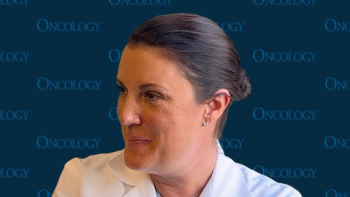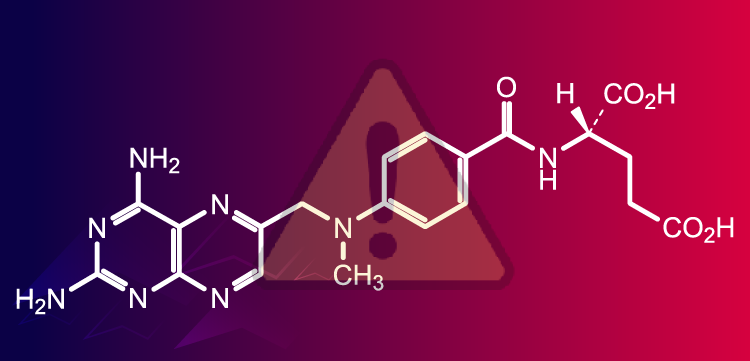
High-Dose Radiotherapy Boosts Survival Without Toxicity Increase in LS-SCLC
Phase 3 data support using twice-daily high-dose thoracic radiotherapy plus concurrent chemotherapy as an alternative therapy for patients with LS-SCLC.
Hyper-fractionated twice-daily radiotherapy conferred an overall survival (OS) improvement vs standard-dose radiation without increasing toxicity among patients with limited-stage small cell lung cancer (LS-SCLC), according to findings from a phase 3 study (NCT03214003) published in Lancet Respiratory Medicine.1
After a median follow-up of 46 months (IQR, 33-56) across the entire study population, the median OS was 60.7 months (95% CI, 49.2-62.0) with 54 Gy of radiation vs 39.5 months (95% CI, 27.5-51.4) with 45 Gy of radiation (HR, 0.55; 95% CI, 0.37-0.72; P = .003). The 2-year OS rates were 76% vs 54% in each respective arm (P = .001).
Complete responses (CRs) and partial responses (PRs) occurred in 12% and 75% of patients who received 54 Gy; the respective rates were 17% and 72% for the 54 Gy arm. Data showed a disease control rate (DCR) of 97% and 93% in each arm (P = .218).
Treatment with 54 Gy of radiation produced a median progression-free survival (PFS) of 30.5 months (95% CI, 14.5-46.5) vs 16.7 months (95% CI, 10.7-22.7) using 45 Gy of radiation (HR, 0.70; 95% CI, 0.49-0.99; P = .044). The median local PFS was not reached (NR) vs 40.6 months (95% CI, 22.8-58.4) in each arm (HR, 0.51; 95% CI, 0.33-0.78; P = .002), and the median metastatic-free survival was 40.2 months (95% CI, 26.6-53.8) and 23.8 months (95% CI, 10.1-37.5), respectively (HR, 0.81; 95% CI, 0.57-1.16; P = .248).
“[H]igh-dose, accelerated, hyper-fractionated, twice-daily thoracic radiotherapy at a dose of 54 Gy, compared with a standard dose of 45 Gy with concurrent chemotherapy, significantly improved the [OS], [PFS], and local [PFS] survival of patients [with] LS-SCLC with a similar toxicity profile,” lead study author Jiayi Yu, MD, from the Key Laboratory of Carcinogenesis and Translational Research (Ministry of Education) in the Department of Radiation Oncology at Peking University Cancer Hospital & Institute in Beijing, China, wrote with coauthors.1 “Our results support that high-dose thoracic radiotherapy with concurrent chemotherapy is an alternative therapeutic option for patients with LS-SCLC without prolonging the overall treatment time.”
In this open-label phase 3 trial, 224 patients were randomly assigned 1:1 to receive volumetric-modulated arc radiotherapy (VMAT) at 45 Gy in 30 fractions (n = 116) or VMAT with a simultaneous integrated boost of 54 Gy in 30 fractions (n = 108) at 0 to 42 days following an initial course of chemotherapy. All patients received twice-daily thoracic radiotherapy in 10 fractions each week.
The trial’s primary end point was OS.2 Secondary end points included local PFS, metastasis-free survival, health-related quality of life, and acute and late toxicity.
Patients 18 to 70 years old with histologically or cytologically confirmed SCLC and limited-stage disease that could be safely managed with definitive radiation doses were eligible for enrollment. Other eligibility criteria included having a measurable lesion per RECIST v1.1 guidelines and an ECOG performance status of 0 or 1.
The median age was 64 years (IQR, 58.3-68.0) in the 54 Gy arm and 64 years (IQR, 57.3-68.0) in the 45 Gy arm, and most patients were male (55% vs 54%). In each respective arm, most patients had an ECOG performance status of 0 (60% vs 60%), former smoking status (62% vs 61%), stage III disease (87% vs 85%), and weight loss of no more than 5.00% at 6 months before study entry (85% vs 85%). The most common sites of relapse in each arm included the chest (30% vs 31%) followed by the brain (13% vs 11%), bones (5% vs 4%), and liver (4% vs 4%).
Across the 54 Gy and 45 Gy arms, respectively, the most common grade 3/4 adverse effects included neutropenia (44% vs 41%; P = .64), thrombocytopenia (13% vs 14%; P = .71), and anemia (9% vs 8%: P = .69). Additionally, 2 and 3 patients in each arm had grade 3 pneumonitis; no patients experienced grade 3 pulmonary fibrosis. Data showed 1 treatment-related death due to myocardial infarction in a patient who received 54 Gy of radiation.
References
- Yu J, Jiang L, Zhao L, et al. High-dose hyperfractionated simultaneous integrated boost radiotherapy versus standard-dose radiotherapy for limited-stage small-cell lung cancer in China: a multicentre, open-label, randomised, phase 3 trial. Lancet Respir Med. 2024;12:799-809. doi:10.1016/S2213-2600(24)00189-9
- Twice-daily SIB radiotherapy versus standard radiotherapy for patients with SCLC (TRISS). ClinicalTrials.gov. Updated June 22, 2023. Accessed April 15, 2025. https://tinyurl.com/bdh7w2pe
Newsletter
Stay up to date on recent advances in the multidisciplinary approach to cancer.

















































































